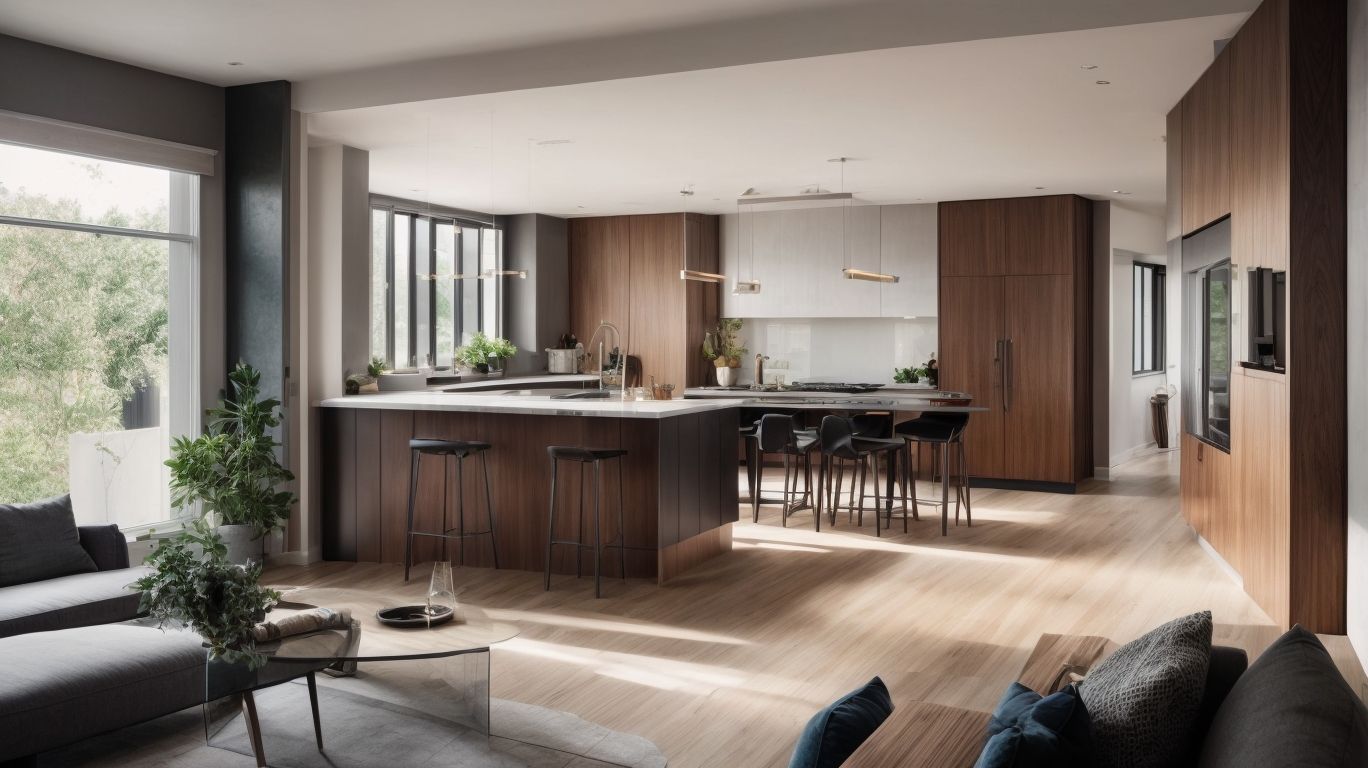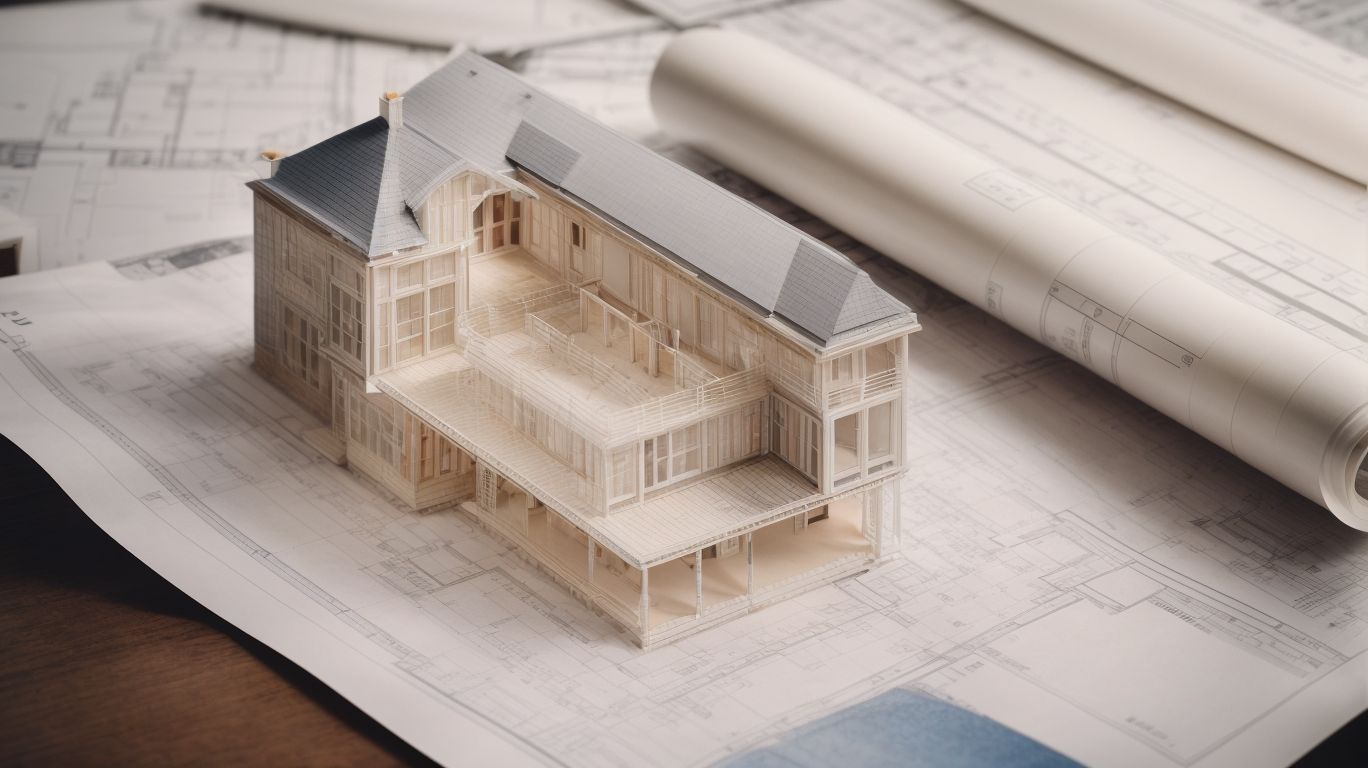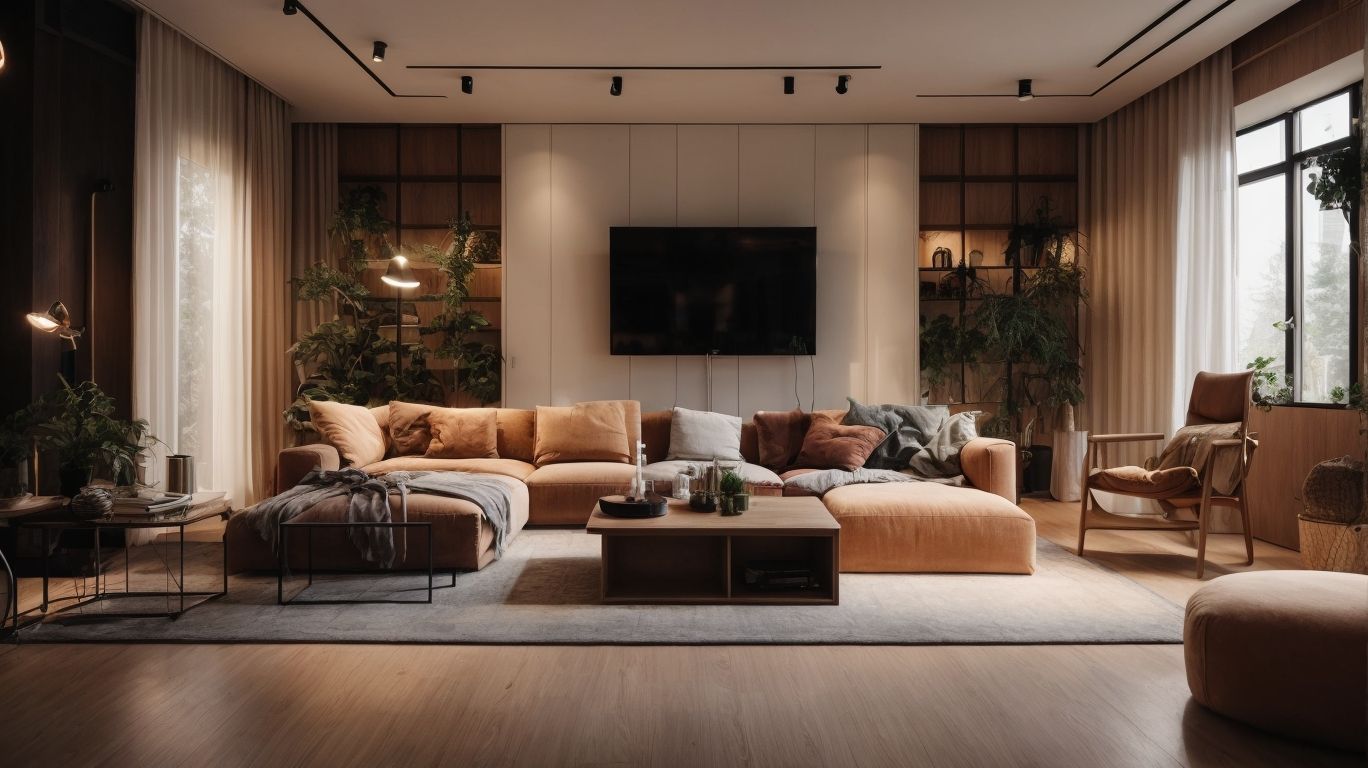
Future Trends in Home Remodeling and Structural Engineering
In the ever-evolving world of home remodeling and structural engineering, staying ahead of the curve is crucial for creating spaces that are not only aesthetically pleasing but also sustainable, functional, and resilient. As we look to the future, exciting trends are emerging that promise to revolutionize the way we approach remodeling and engineering projects. From the integration of cutting-edge technologies to a heightened focus on environmental impact and wellness, the landscape of home remodeling and structural engineering is set to undergo significant transformations.
In this article, we will delve into the future trends that are shaping the industry, offering insights into the innovative approaches that will define the homes and structures of tomorrow. Join us as we explore the fascinating developments that are poised to redefine the way we build, remodel, and inhabit our living spaces.
Current Trends in Home Remodeling
The current trends in home remodeling encompass a range of innovative solutions and design trends that are shaping the construction and renovation process.
Open Floor Plans
Open floor plans have become a prevalent feature in home remodeling, emphasizing spaciousness, design flexibility, and structural analysis to ensure architectural integrity.
This trend is attributed to the desire for a seamless flow between living spaces, creating an open and welcoming environment. By eliminating barriers, natural light can permeate throughout the space, enhancing the overall ambiance. Construction considerations include load-bearing walls, HVAC ductwork, and electrical wiring to accommodate the new layout.
Interior design benefits from the versatility of open floor plans, allowing for cohesive decor and fluid transitions between functional areas such as the kitchen, dining, and living spaces.
Smart Home Technology
The integration of smart home technology in remodeling projects is redefining home improvement, emphasizing energy efficiency, sustainable practices, and innovative solutions for modern living.
This revolutionary approach to home renovation leverages advanced automation, intelligent systems, and interconnected devices to create homes that adapt to the needs and preferences of their inhabitants. With features such as automated lighting, climate control, and energy management, smart homes optimize resource usage, reduce environmental impact, and provide unparalleled convenience.
These technologies offer homeowners the ability to monitor and control their homes remotely, enhancing security and peace of mind. The seamless integration of smart systems seamlessly merges practicality with cutting-edge luxury, catering to the evolving demands of contemporary living.
Sustainable and Eco-Friendly Design
The emphasis on sustainable and eco-friendly design in home remodeling projects underscores the use of green building materials, sustainable construction practices, and a commitment to minimizing environmental impact.
This shift towards sustainable design reflects a growing awareness of the need to reduce our ecological footprint and embrace more environmentally conscious choices. From reclaimed wood and recycled glass to energy-efficient appliances and low VOC paints, homeowners are increasingly seeking out materials and practices that align with their environmental values.
Integrating renewable energy sources, such as solar panels and smart home technology, is also becoming a key consideration in modern remodeling projects, further emphasizing the commitment to sustainable practices.
Multi-functional Spaces
The creation of multi-functional spaces is a growing trend in home remodeling, requiring thoughtful integration of structural engineering, architectural design, and interior design to achieve versatile and efficient living areas.
This approach involves a careful balance between functionality and aesthetics, with an emphasis on maximizing space utilization. By incorporating innovative structural elements, such as sliding walls or convertible furniture, homeowners can optimize the use of their living spaces. Architectural design plays a crucial role in creating seamless transitions between different functional zones, ensuring that the overall layout remains cohesive and visually appealing.
In parallel, interior design choices, such as modular storage solutions and adaptable furnishings, contribute to the versatility of these spaces, allowing for easy transformation based on evolving lifestyle needs.
Aging-in-Place Features
Incorporating aging-in-place features in home remodeling projects aligns with the principles of sustainable housing, energy-efficient design, and architectural innovation, ensuring long-term comfort and functionality for residents.
These features not only enhance the living environment but also promote a sense of independence and accessibility for individuals as they age. By integrating features such as stepless entries, grab bars, and wider doorways, homes become more inclusive and accommodating for the changing needs of occupants.
Sustainable housing principles also emphasize the use of durable materials and efficient designs that reduce environmental impact while maintaining durability and resilience. This holistic approach to remodeling not only benefits the current occupants but also adds long-term value and appeal to the property.
Current Trends in Structural Engineering
The field of structural engineering is witnessing current trends that revolve around construction methodologies, ensuring structural integrity, advanced building design, and the integration of cutting-edge technology.
Use of Sustainable Materials
The utilization of sustainable materials is a prominent trend in modern structural engineering, emphasizing cost-effective solutions, sustainable construction practices, and a commitment to sustainable development.
These sustainable materials, such as bamboo, recycled steel, engineered wood, and sustainable concrete, offer significant benefits for construction projects. They not only reduce the environmental impact by minimizing the extraction of raw materials and energy consumption but also contribute to the overall sustainability of the built environment.
In addition, the use of sustainable materials in construction aligns with the growing societal emphasis on environmentally responsible practices, creating a positive ripple effect on sustainable development initiatives.
Incorporating Seismic and Wind Resistance
The emphasis on incorporating seismic and wind resistance in structural engineering revolves around effective seismic retrofitting techniques, adherence to building codes, and advanced seismic design considerations.
This integration plays a crucial role in ensuring the safety and stability of structures, especially in regions prone to seismic and wind events. By implementing seismic retrofitting techniques, such as base isolation and dampers, existing structures can be strengthened to withstand potential ground motions. Compliance with building codes ensures that the design and construction meet the necessary standards for structural resilience.
Advanced seismic design further enhances the structural integrity by considering dynamic loads and response spectrum analysis for optimal performance during seismic disturbances.
Embracing Prefabrication and Modular Construction
The embrace of prefabrication and modular construction in structural engineering emphasizes the adoption of efficient construction methods and innovative building technology for accelerated project delivery.
This growing trend allows for greater precision and quality control in the manufacturing process, resulting in reduced construction time and waste on-site. The integration of innovative building technology such as 3D printing and advanced material sciences has further revolutionized the industry, enabling the creation of complex and sustainable structures with enhanced durability and energy efficiency.
Utilizing 3D Printing Technology
The utilization of 3D printing technology in structural engineering signifies a digital transformation, leading to advanced construction capabilities and the exploration of innovative architectural materials.
This innovative technology allows for the creation of complex and customized structural components with high precision, reducing construction time and costs. 3D printing enables architects and engineers to experiment with new materials, such as advanced composites and sustainable substances, revolutionizing the design and functionality of buildings.
The integration of 3D printing in structural engineering promotes sustainable construction practices and fosters a more adaptable and efficient built environment, contributing to the evolution of the industry.
Implementing Building Information Modeling (BIM)
The implementation of Building Information Modeling (BIM) in structural engineering signifies a shift towards modern construction trends, standardized building practices, and the integration of sustainable solutions for built environments.
It has revolutionized the way structural engineers plan, design, and execute projects, leading to improved accuracy, reduced rework, and enhanced project collaboration. BIM enables engineers to adhere to building standards by creating detailed 3D models that encompass every aspect of the structure, ensuring compliance with regulations and codes.
The integration of sustainable solutions within BIM allows for the analysis of energy efficiency, material optimization, and environmental impact, aligning with the growing emphasis on sustainable construction practices.
Future Trends in Home Remodeling
The future trends in home remodeling are anticipated to be characterized by a digital transformation, the integration of smart home features, and the evolution of architectural trends alongside advanced construction techniques.
Virtual and Augmented Reality for Design and Planning
The future of home remodeling is poised to incorporate virtual and augmented reality for immersive design and planning experiences, fostering innovative solutions and aligning with evolving design trends.
This integration of virtual and augmented reality technologies will revolutionize the design and planning process by providing homeowners, designers, and architects with the ability to visualize and interact with proposed changes in real time. It will enable them to explore different materials, finishes, and layouts, allowing for informed decision-making and seamless collaboration.
This technology will facilitate the incorporation of sustainable and energy-efficient elements, aligning with the growing emphasis on eco-friendly design practices in the remodeling industry.
Integration of Artificial Intelligence
The integration of artificial intelligence is set to revolutionize home remodeling, influencing smart design decisions, advancing construction technology, and paving the way for innovative materials and solutions.
With AI, homeowners can expect personalized design recommendations and predictive modeling that optimizes space utilization and energy efficiency. This technology enables a more streamlined and efficient construction process, potentially reducing costs and project timelines.
AI can facilitate the use of cutting-edge materials and intelligent solutions, creating homes that are not only aesthetically pleasing but also highly functional and sustainable. These developments mark a significant shift towards a more intelligent and futuristic approach to transforming living spaces.
Increased Use of Green Technology
The increased use of green technology in future home remodeling projects underscores a commitment to sustainable architecture, adherence to building regulations, and the promotion of eco-friendly construction practices.
This trend reflects a growing awareness of the environmental impact of construction and homeowners’ desire to minimize this impact. By incorporating renewable energy sources, energy-efficient appliances, and sustainable building materials, homes can significantly reduce their carbon footprint.
The integration of green technology aligns with global efforts to address climate change and create a more sustainable future. Embracing these eco-friendly practices demonstrates a dedication to responsible, forward-thinking home remodeling.
Focus on Health and Wellness in Design
Future home remodeling trends are expected to place a heightened focus on health and wellness in design, promoting sustainable solutions, energy-efficient design, and the incorporation of advanced materials for enhanced living environments.
This shift towards a more health-conscious and sustainable approach encompasses various aspects of home design, such as the utilization of natural lighting to promote well-being, the incorporation of indoor plants for improved air quality, and the integration of eco-friendly building materials to reduce environmental impact.
The emphasis on energy-efficient design principles includes the adoption of smart home technology and renewable energy sources to create more eco-friendly and cost-effective living spaces.
Future Trends in Structural Engineering
The future trends in structural engineering are poised to encompass advancements in seismic design, evolving engineering trends, the promotion of sustainable practices, and the integration of construction innovation for resilient built environments.
Advancements in Robotics and Automation
Future trends in structural engineering are expected to feature significant advancements in robotics and automation, revolutionizing structural solutions and the integration of advanced building systems through engineering technology.
These advancements in robotics and automation are anticipated to streamline construction processes, enhance precision in structural fabrication, and enable the development of innovative construction methods. This integration with engineering technology is poised to drive efficiency, reduce labor costs, and improve safety in construction practices.
As a result, the evolution of engineering technology will play a pivotal role in shaping the future landscape of structural engineering, paving the way for sustainable and resilient structures that can meet the demands of a rapidly changing world.
Development of Self-Healing Materials
The development of self-healing materials is set to revolutionize structural engineering, fostering architectural innovation, advancing the use of advanced materials, and aligning with principles of green design for sustainable built environments.
These innovative materials have the potential to significantly enhance the durability and longevity of infrastructure by autonomously repairing cracks and damage, thereby reducing maintenance costs and extending the lifespan of buildings and bridges. Their incorporation into construction practices holds immense promise for creating resilient and sustainable built environments, as they can minimize the need for frequent repairs and replacements, contributing to resource conservation and minimizing environmental impact.
The integration of self-healing materials can lead to the development of more eco-friendly structures, aligning with the global shift towards sustainable and green design principles. This transformative approach in structural engineering signifies a crucial leap towards a greener and more resilient future for the built environment.”
Use of Drones for Inspection and Maintenance
The use of drones for inspection and maintenance is anticipated to redefine structural engineering practices, optimizing construction management processes and enhancing the efficiency of building renovation initiatives.
These unmanned aerial vehicles offer the capacity to capture high-resolution imagery and data, enabling engineers and construction professionals to monitor and assess the condition of structures with unprecedented detail and accuracy. By leveraging drones, professionals can conduct inspections in hard-to-reach areas, reducing safety risks and time consumption while improving overall project management.
Drones facilitate the proactive identification of potential maintenance issues, leading to timely and cost-effective interventions, ultimately contributing to the longevity and safety of buildings and infrastructure.
Incorporation of Biophilic Design
The incorporation of biophilic design in structural engineering is poised to influence urban development, redefining urban construction practices and promoting the integration of sustainable technologies for environmentally responsive built environments.
This approach aims to seamlessly blend the natural elements with architectural structures, providing urban spaces with enhanced aesthetics and functionality. By incorporating elements such as natural light, greenery, and water features, biophilic design can create welcoming and calming urban environments.
It encourages the use of sustainable materials and energy-efficient technologies, contributing to the overall reduction of the carbon footprint in urban areas. As a result, cities can benefit from improved air quality, reduced heat island effect, and overall healthier living spaces for their residents.




No Comments